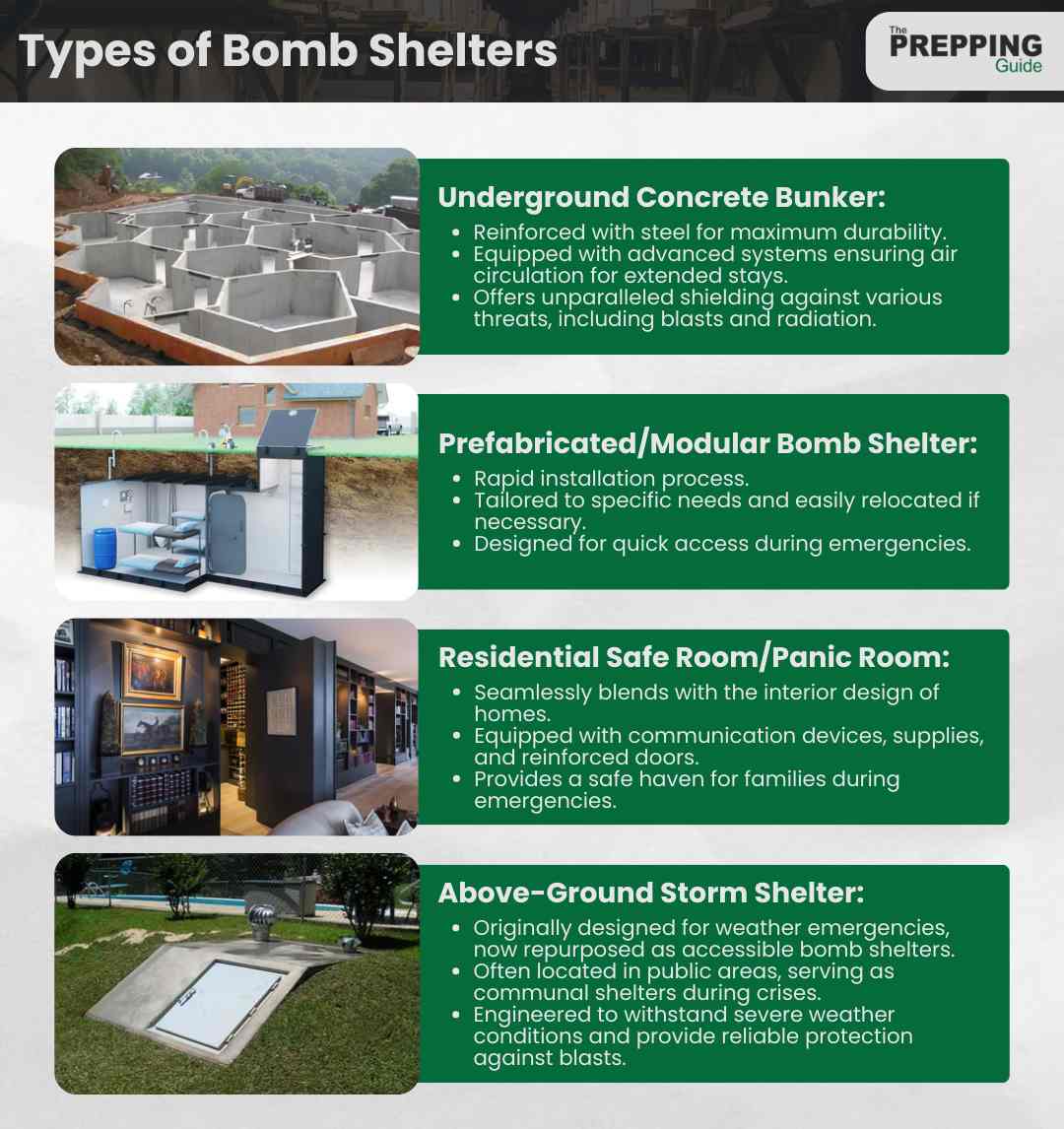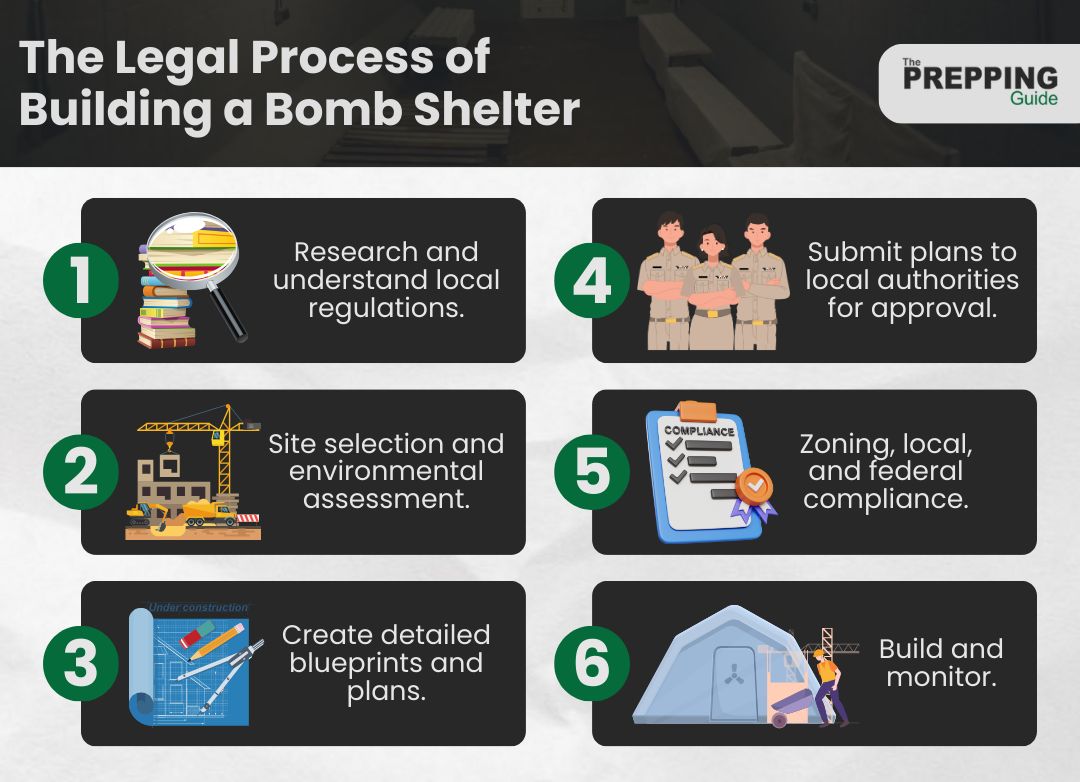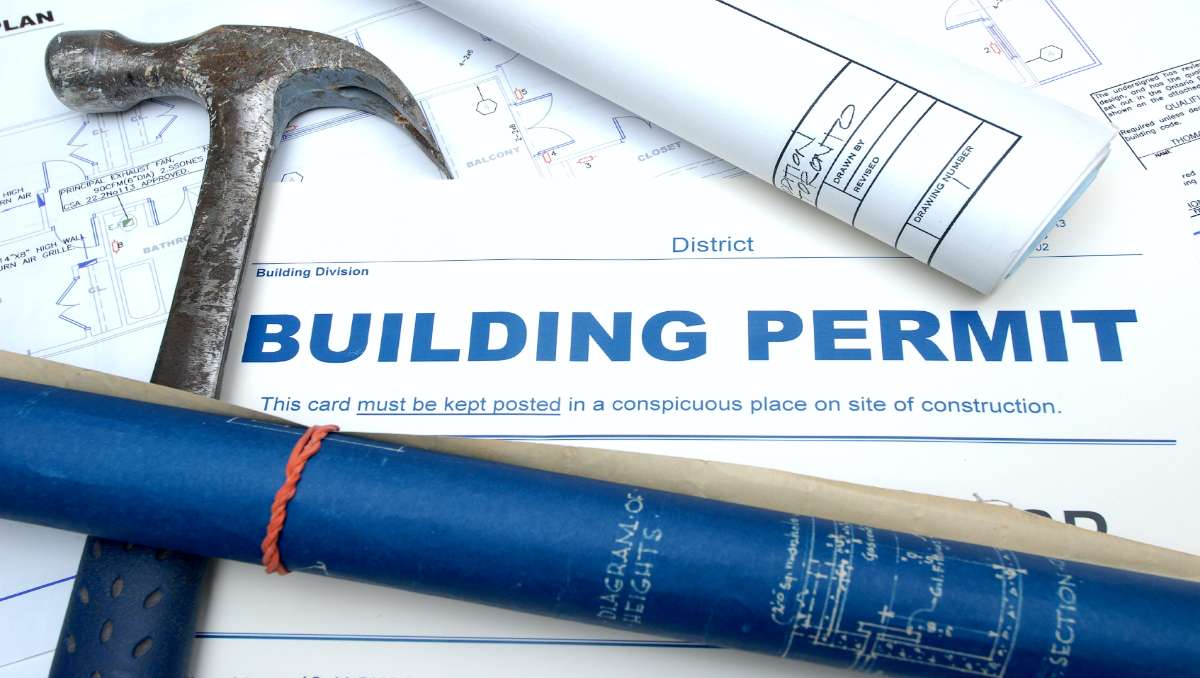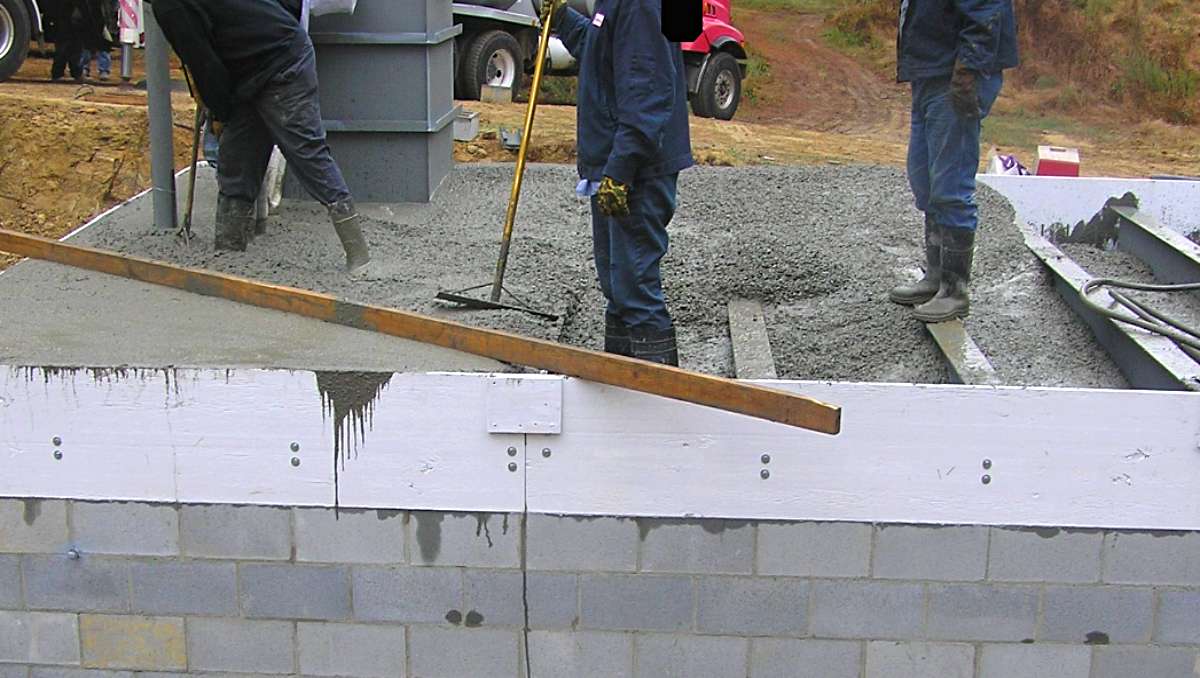Personal preparedness has taken center stage in an era marked by a growing awareness of global challenges. One manifestation of this focus on safety is the resurgence of interest in bomb shelters. As individuals contemplate the need for a secure haven in the face of potential threats, a critical question arises: Is it legal to build a bomb shelter?
It is generally legal to build a bomb shelter, but the legality depends on various factors. Individuals must comply with local building codes and zoning regulations and obtain necessary permits. Environmental impact assessments may also be required.
In this article, we will delve into the intricacies and regulations that govern the construction process of building a bomb shelter, ensuring that you have all the knowledge needed to navigate this path with confidence.
The Growing Interest in Bomb Shelters
In recent years, there has been a palpable surge in public interest surrounding the construction of bomb shelters. Fueled by global uncertainties, geopolitical tensions, and a heightened awareness of potential threats, individuals and communities are increasingly seeking ways to fortify their sense of security.
The proliferation of traditional and digital information has played a pivotal role in driving this interest. As news of international conflicts, natural disasters, and other crises dominate headlines, individuals must contemplate their vulnerability and explore proactive measures.
Social media platforms, in particular, have facilitated the dissemination of information about bomb shelters, fostering a community of individuals eager to share insights, experiences, and recommendations. This interconnectedness has, in turn, fueled a sense of urgency and collective action among those seeking to safeguard themselves and their loved ones.
Moreover, the evolving nature of global threats, from potential nuclear incidents to pandemics, has prompted a paradigm shift in how society perceives personal security. Bomb shelters, once associated primarily with the Cold War era, are being reevaluated as practical, modern solutions for preparedness.
Types of Bomb Shelters You Can Build

When considering the construction of a bomb shelter, individuals have a range of options to choose from, each designed to cater to specific needs and preferences.
One common type is the concrete underground bunker, known for its durability and ability to withstand various external threats. These structures are typically reinforced with steel and equipped with ventilation systems, providing a secure and well-ventilated space.
Another popular choice is the prefabricated or modular bomb shelter, which offers a more flexible and quicker installation process. These shelters often come in customizable designs and can be installed above or below ground.
For those seeking a discreet and inconspicuous option, the residential safe room or panic room provides a viable choice. These rooms, often constructed within the home, blend seamlessly with the existing architecture and serve a dual purpose as a secure storage space or home office.
Additionally, above-ground and underground storm shelters designed to withstand extreme weather conditions can be repurposed as bomb shelters, providing an accessible and practical solution. It’s essential to note that the type of bomb shelter chosen depends on factors such as budget, available space, and the specific threats one aims to mitigate.
So, Is It Legal to Build One?
Yes, generally, it is legal to build a bomb shelter. However, the legality depends on various factors and is subject to compliance with local, state, and federal regulations.
Individuals must adhere to building codes and zoning regulations and obtain the necessary permits before constructing a bomb shelter. Environmental impact assessments may be required in some cases. Property rights, homeowner association restrictions, and insurance considerations should also be addressed.
Engaging with legal professionals and local authorities is also advisable to ensure that the construction process aligns with the applicable laws and regulations.
To comply with regulations, it’s important to familiarize yourself with the laws surrounding the construction of bomb shelters. Safety measures should be a top priority when building such structures. Ensuring that the shelter is sturdy and well-constructed is crucial to provide adequate protection during emergencies.
Legal Considerations for Building a Bomb Shelter
When considering building a bomb shelter, it’s crucial to be aware of the legal considerations that come with it. Local regulations and zoning laws vary from one area to another, so it’s important to research and understand what’s permitted in your specific location.

Local Regulations and Zoning Laws
Obtaining the necessary local permits and adhering to construction regulations before starting any work is crucial.
These regulations ensure that your bomb shelter meets safety standards and doesn’t violate any property restrictions. Local authorities may have specific requirements regarding the location, size, and design of bomb shelters, so it’s essential to consult with them beforehand.
Building inspections are typically conducted throughout construction to ensure compliance with these regulations.
For example, in Texas, as written in their Construction Standards and Requirements, the city’s civil defense fallout shelters must meet a few examples of the basic requirements and restrictions:
(a) Any use of fallout shelters other than for disaster protection should be ancillary to disaster protection and shall not interfere with the shelter’s main protective purpose.
(b) Civil defense fallout shelters with a manually or mechanically controlled ventilation system must deliver three cubic feet of fresh filtered air per minute for each person within the fallout shelter.
(c) Civil defense fallout shelters must comply with the city’s zoning rule and be built on a lot that meets the zoning ordinance’s minimum yard requirements for the district in which the shelter is located.
(d) Civil defense fallout shelters must be placed with a suitable sign indicating their capacity, as approved by the civil defense shelter board.
National Regulations
While navigating the process of constructing a secure underground haven, it’s crucial to be aware of the national regulations in place.
National regulations play a significant role in determining the legality and feasibility of building a bomb shelter. Building codes and safety standards established by federal agencies are essential considerations when undertaking such a project. These regulations ensure that construction meets specific criteria to ensure the safety of occupants and surrounding areas.
Additionally, obtaining construction permits is typically required to build a bomb shelter legally.
Failure to comply with national regulations can have serious legal implications, including fines or even criminal charges. Therefore, it’s vital to thoroughly research and adhere to all applicable guidelines before embarking on this endeavor.
Environmental and Health Safety Regulations
Building a bomb shelter requires compliance with environmental and health safety regulations to ensure the well-being of occupants. Safety precautions must be taken into account throughout the entire process, from selecting appropriate building materials to following proper construction procedures.
When choosing building materials, opting for those that can withstand extreme conditions and provide adequate protection against potential threats is crucial. The construction process should also adhere to specific guidelines to guarantee structural integrity and minimize risks.
Emergency supplies play a vital role in bomb shelters as they’re essential for survival during an emergency. These supplies should be carefully selected and regularly maintained to remain functional when needed most.
In connection to the environmental and health safety regulations stated in Fallout Shelters Requirements:
“Civil defense fallout shelter sanitary facilities shall not be connected directly to the city sanitary sewer system or any septic tank sewer system. Each civil defense fallout shelter shall have a chemical toilet facility or an adequate supply of plastic bags or closed containers adequate to serve the number of persons to be housed during a disaster situation” and “storage of fresh water within the civil defense fallout shelter shall be provided on a basis of one-half gallon per person per day.”
On the other hand, maintenance and upkeep are critical aspects of owning a bomb shelter, as they may compromise its effectiveness and put occupants at risk.
To comply with environmental regulations, it’s important to consider waste disposal methods that don’t harm the environment. Hazardous materials should be handled properly, ensuring they’re stored safely or disposed of according to local regulations.
You might be interested to learn about how deep should bomb shelter be.
The Legal Process of Building a Bomb Shelter

To legally build a bomb shelter, you need to research and understand the local regulations and requirements beforehand.
1. Research and Understand Local Regulations
Research and understand the safety requirements, construction permits, building materials, emergency preparedness, and cost considerations specific to your area.
As stated in the first part of this article, it is important to comply with these regulations for legal reasons and your safety and that of others. Safety requirements may include specifications on ventilation systems, structural integrity, and fire resistance.
Construction permits are necessary to ensure that your project meets building codes and zoning regulations. Additionally, understanding which building materials are allowed can help you make informed decisions about the durability and effectiveness of your bomb shelter.
2. Site Selection and Environmental Assessment
Before beginning your project, it’s crucial to carefully evaluate and choose the ideal site for your protective structure while also considering environmental factors.
Site selection is an essential step in building a bomb shelter. Conduct thorough soil testing to ensure stability and suitability of the location. This will help determine if the site can withstand external forces during construction or natural disasters.
An environmental impact assessment should also be conducted to minimize any negative effects on the surrounding ecosystem.
3. Create Detailed Blueprints and Plans
Now that you’ve finalized the site selection and completed the necessary environmental assessments, it’s time to dive into creating detailed blueprints and plans for your bomb shelter. This crucial step ensures that your shelter is constructed efficiently and meets all safety standards.
During this process, you’ll need to consider various construction challenges that may arise, such as soil stability or water drainage. Additionally, cost considerations play a significant role in determining the materials and design options available to you. It’s important to strike a balance between functionality and affordability.
Safety measures should always be at the forefront of your planning process. Incorporating features like reinforced walls, ventilation systems, and emergency exits can significantly enhance the protection provided by your bomb shelter.
4. Submit Plans to Local Authorities for Approval
Once your detailed blueprints and plans are finalized, it’s time to present them to local authorities for approval. Submitting plans to the local authorities ensures that you comply with all relevant building regulations and legal requirements.
During this stage, providing accurate information about the materials, dimensions, and construction techniques proposed for your shelter is essential.
The approval process may involve inspections or additional documentation requests from the authorities. By proactively engaging with local authorities, you demonstrate your commitment to following regulations while seeking their guidance and expertise throughout the project.
5. Zoning, Local, and Federal Compliance
Ensuring compliance with zoning, local, and federal regulations is essential for obtaining approval to construct your shelter.
To ensure compliance, it’s important to follow the proper compliance process. This typically involves submitting detailed plans and legal documentation that outline the specifications of your bomb shelter. Local authorities will review these documents to ensure they align with zoning regulations and meet all necessary safety standards.
It’s crucial to be knowledgeable about these regulations as they vary based on location. Consulting with professionals specializing in bomb shelter construction can help you navigate this complex process and increase your chances of obtaining approval swiftly.
6. Build and Monitor
To successfully construct and maintain your secure refuge, it’s crucial that you actively oversee the building process and regularly monitor its functionality.
Safety measures must be prioritized during construction to protect against potential hazards. Selecting appropriate construction materials is also essential for the durability and longevity of the shelter. Considerations such as cost should be considered, as bomb shelters can range in price depending on the size and features desired.
Potential Legal Challenges and How to Overcome Them
When building a bomb shelter, you may encounter potential legal challenges that must be addressed. It is important to overcome these challenges by ensuring compliance with local zoning regulations and building codes, managing any potential environmental impact, and obtaining proper liability insurance to protect yourself from unforeseen incidents.
Zoning and Building Code Violations

Building permits are essential and must be obtained before constructing a bomb shelter. These permits ensure that the construction follows all relevant construction regulations, which vary depending on the location.
Building inspections may also be required at different project stages to verify compliance with safety standards. Failure to adhere to these codes and regulations can result in violations and penalties, such as fines or even demolition orders.
Understanding the legal consequences associated with non-compliance is crucial, as they can range from financial penalties to potential legal action.
According to the law, dwellings that do not satisfy the standards for mandated bomb shelters may fail to function properly. If the developer fails to meet the essential standards for creating a bomb shelter, the state architectural and construction control agency can refuse to grant a certificate of preparedness for the structure.
This implies that a building that does not fulfill the bomb shelter standards will not be commissioned or issued occupancy permits.
Environmental Concerns
One major consideration when constructing a bomb shelter is its impact on the surrounding environment. Building permits are required to ensure compliance with safety regulations and to assess any potential environmental impact.
Construction materials must also be carefully considered to minimize negative effects on the ecosystem. Proper waste management during construction is crucial to prevent pollution and maintain a clean environment.
Public opinion is important in addressing environmental concerns related to bomb shelters. Engaging with the community and addressing their concerns can help build trust and foster a sense of belonging among residents. It’s essential to communicate openly about the project’s environmental efforts, such as implementing measures for noise reduction or landscaping plans.
Liability Issues
When considering the construction of a bomb shelter, it’s crucial to consider various factors that can impact your liability. Firstly, it’s essential to avoid legal ramifications and ensure that your shelter is built according to safety standards.
Additionally, reviewing your insurance coverage to understand if it protects you in case of any accidents or damages related to the shelter is advisable. Taking proper safety precautions during construction and maintaining emergency preparedness protocols are equally vital for minimizing liability risks.
Being thorough and cautious throughout this process can give you and others a sense of security while staying within legal boundaries.
What if I Build A Shelter Without A Permit?

If you go ahead and build a shelter without a permit, you’ll be walking on thin ice legally. Building regulations exist for a reason, and unauthorized construction can have serious legal ramifications. It’s important to understand the consequences and legal penalties associated with building a bomb shelter without proper authorization.
When you decide to build a shelter without obtaining the necessary permits, you violate building regulations set forth by your local government. This unauthorized construction can result in various legal repercussions. Firstly, you may face fines or citations from the authorities if discovered. These penalties can range from moderate to substantial, depending on the severity of the violation.
Moreover, building without a permit jeopardizes your safety and others who might seek refuge in your shelter during an emergency. Without proper oversight and adherence to safety standards, there is an increased risk of structural failures or other hazards that could potentially harm occupants.
It is crucial to respect and abide by the laws governing construction activities in your area. By doing so, you will avoid legal troubles and contribute to creating a safer community for everyone involved.
However, when you do decide to build your bomb shelter DIY-style, it will not be a secret whether you do it yourself or pay someone. If it is slightly remote, it will also not be a secret. Digging it out, transporting dirt, bringing supplies, and building will be visible.
Build with Certainty: Legal Framework for Bomb Shelters
In conclusion, it is advisable to consider the legal implications before embarking on the construction of a bomb shelter. It is crucial to adhere to the necessary environmental and health safety regulations while going through the legal process.
However, should you decide to proceed without obtaining a permit, some unfortunate consequences could arise. Therefore, it would be wise to obtain all necessary permits to avoid any unwanted legal challenges down the road.
